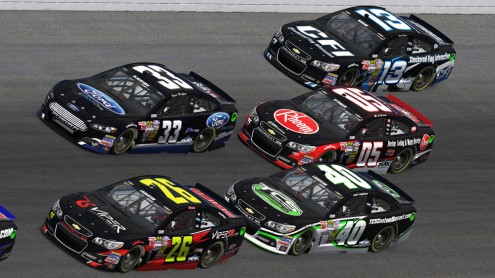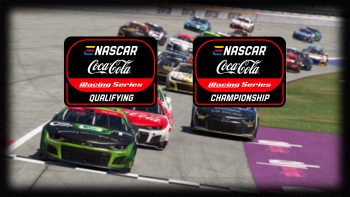
Behind the Scenes: The NASCAR Peak Antifreeze Series
March 10th, 2014 by Jaime Baker
Daytona Race
Last Tuesday morning, I got up and checked the iRacing community sites (twitter, facebook, forums, etc.) to see a lot of mentions of the start of the NASCAR Peak Antifreeze Series Powered by iRacing later that night. It wasn’t long before I got the itch to call another race, so I sent Nick’s (Ottinger) spotter Peter Fisher a text asking if I could come out of “retirement”. His response was better than I expected: “Come and help all you want and as much as you can. My only goal is [going to] Miami.” I sent Nick a text after that, and he was all for it, too. Sweet! I was going to be back calling the shots again. Can you say you missed something if you never stopped doing it? I don’t know, but I was ready to get this season underway.
I didn’t do any work with the team for preseason testing, due to both school work and a three-month “retirement,” so I had to get all the info from Peter before starting the race. We could run 43 laps on a tank (0.4 gal/lap), down five laps from the previous year. Not good; we would need to make two stops for sure. I also got all the information on what adjustments could be made to the car, noted the weather, and set pit stop windows for Laps 43 and 86. Bare minimums, but it served as a guideline.
The pace laps are always crazy. There’s a lot of dashing to get everything set in a short amount of time. Peter has to make sure he can see everything, I have to make sure my timing/scoring monitor is running in real-time, we have to check all our communication channels to make sure they’re working (even more so at Daytona), and Nick has to get prepared for the start. As is typical, we finished all that as the pace car exited Turn Four. Just as Nick’s car left the banking, I said, “Good luck Ottiboss, he’s all yours Pete.”
The pace car pulled away, and Peter said, “Green. Let’s have a good season” — then we were off.
Typically I do not speak to Nick until halfway to the first pit stop. This time, I spoke up on Lap Five. Nothing much, just a quick “Temps please,” then back into the shadows. After starting third, it wasn’t long before all four of our team cars began falling back, and Nick was back in 13th. I asked if everything was alright, and I got a “Just around 75% throttle, trying not to overheat it. Plenty of time left boss, don’t worry about it.” Realizing Nick had just told me how to race at this track, I figured silence would be the better policy, so I ducked back into the shadows and let Peter cloud up the radio with a constant stream of updates.
It’s rare that I actually watch Nick at a superspeedway, and throughout the first part of the race, I noticed the high-line working fairly well with some cars running from lower positions up to the lead. It wasn’t falling off as I had expected, so I asked Nick, “How do you feel about the high line?” His response was simple: “Too much work.” I asked if he was that lazy, and he said, “No, the cooling system can’t recover well enough for me to make a decent run up there. I have to stay here for now.” This is what I get for missing testing, I guess. I contemplated removing some tape so he could run up in a higher lane, but that got dismissed fairly quickly.
By the time Lap 35 hit, I realized that green-flag stops were a serious possibility. As the highest running GFR car at the time, I was aware that everyone on the team would be looking to me for a time to pit. I started running through all our teamspeak channels asking about fuel situations when I heard Nick key up and say, “I want to pit with Ray [Alfalla]. Make it happen.” A few quick private messages between myself and the two-time champion and our pit stop was set for Lap 45. I expected maybe eight cars to come to pit road with us. I think we actually had something like 20. I realized we’d made a huge mistake when the left side of Nick’s car jacked up and Ray was long gone from his pit stall. We made it back into a pack though, and I started thinking about our next stop. We lost a ton of spots, but everything was smooth sailing at that point.
I was just a race spectator until Lap 57 when cars started hitting pit road again. The pit window had opened, and I didn’t even consider people pitting when they could make it. I figured we’d all run until lap 85 or so and then cycle through again. I thought the first group was a fluke, an army of gamblers, but then a second group pitted. Then a third. I started panicking, and Nick didn’t help by saying “We’re going to have to pit early.” After about 30 seconds, I had figured-out how much fuel was needed to make it to the finish, set the pit stop for fuel-only, and called him back to pit road.
“I had given Nick exactly the amount of fuel he needed to finish the race, but I overlooked one very important detail . . .”
It’s rare that everybody pits once the final window is open. So rare, in fact, that it’s never happened while we’ve been in the NASCAR PEAK Antifreeze Series. We were totally caught off-guard and had to scramble to get what we needed to work this new development into our race. Once everything had cycled out and we had gotten our heads around what had just happened, we were back in a big pack, good to the end on fuel, and my job as strategist was over. I had given Nick exactly the amount of fuel he needed to finish the race, but I overlooked one very important detail: I based the mileage off the first stint when he was running less than full throttle. I realized this almost immediately after he left pit road, but when he asked, “Are we good from here?” I put on my poker face and said, “We’re good to go.” In all reality, we were likely going to be a lap or two short. He left pit road with seven extra laps, then that went down to five extra laps, then three laps. Eventually it leveled out at three extra laps, and once our team found each other on track, I told him it was time to head to the front, and hoped more than anything he wasn’t going to run out of gas.
I expected him to charge through the pack and make it to the front, pulling at least one of our teammates with him. However, I was caught off guard yet again when he had made no headway after five laps. I checked my timing/scoring monitor, and it appeared that we had waited too long: everyone took off at nearly the same time. Times for everyone in our pack lowered at the same time, so it looked like we were going to face a struggle to get past 15 or so cars in the final 20 laps. I was secretly still hoping for a caution, if nothing else but to hide my mistake with the fuel strategy.
It was this point in the race where I started planning a final pit stop in the event of a caution. Take tires at all? Obviously fill the tank back up. Any adjustments? I was flipping through my notebook when I heard “Wrecking in front of you,” looked up and saw Nick slam into the wall in Turn Four. Two cars had bumped each other in front of Nick and, after attempting to avoid the carnage, he was collected in it.

The #05 was involved in a crash late in the race, and the resulting damage ended any chance of a good finish.
From where my camera was, it didn’t look that bad. Just a scrape along the wall, and we’ve won races with worse. But when Nick drove through the tri-oval and I couldn’t see his right-side number, I knew our race was over. He pitted to try to fix the damage, but the car was bent up so badly that it couldn’t go much faster than 160mph. Two wrecks later in the race netted us four more spots, but we were going to be forced to settle with 38th place, three laps down. It was the farthest we’d made it in a speedway race, but we didn’t get to the finish yet again. Nick was obviously upset after having a decent car and parked it before the race ended once his position was locked.
Speedway races are difficult, especially these Pro-level races. The cars are very evenly matched and change positions so frequently that it’s difficult to nail down when to make a move. Throw-in that we were completely caught off-guard by the quick second round of stops, and we were probably just lucky to be in contention when the crash happened. They say it’s hard to win the Daytona 500, but this 250-mile version seems to be impossible. Despite a mediocre showing from our team, we’ve already put it behind us. It’s time to move on to Las Vegas!
Be sure and catch Round Two of the NASCAR PEAK Antifreeze Series Powered by iRacing on iRacing.com/live at 9 PM EDT tonight (01:00 GMT Wednesday).

















































